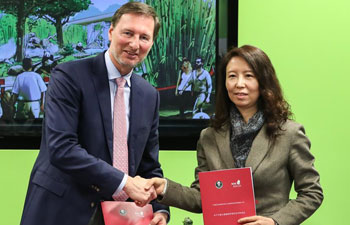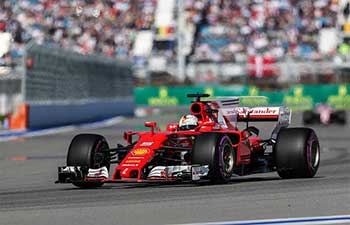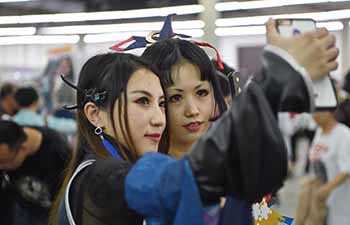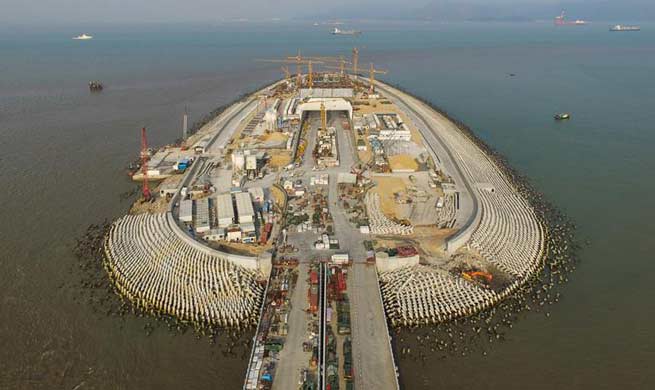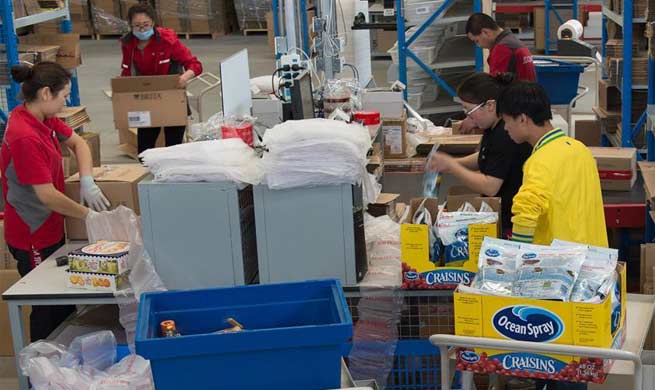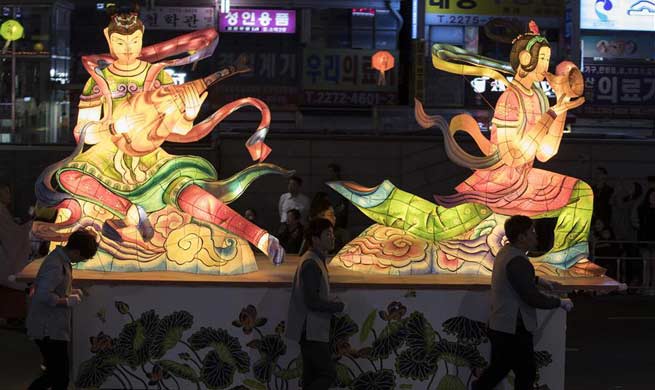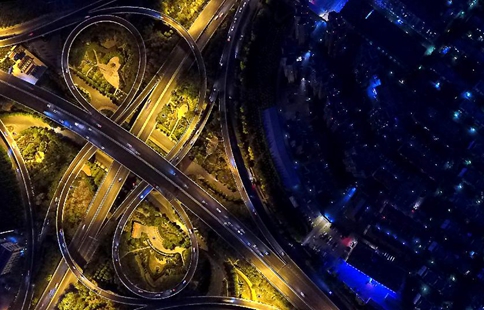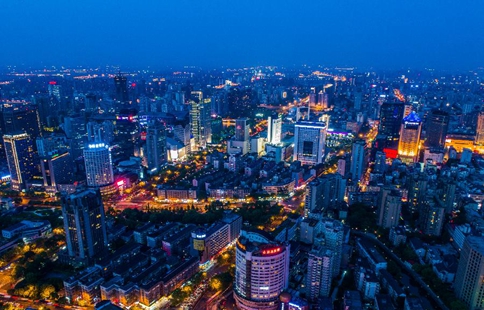XIAMEN, Fujian Province, April 30 (Xinhua) -- In a factory in eastern China, farming is becoming like scientific endeavor, with leafy vegetables embedded neatly on stacked layers, and workers in laboratory suits tending the plants in cleanrooms.
The factory, with an area of 10,000 square meters, is in Quanzhou, Fujian Province. Built in June 2016, the land is designed to be a "plant factory," where all environmental factors, including light, humidity, temperature and gases, can be controlled to produce quality vegetables.
The method is pursued by Sananbio, a joint venture between the Institute of Botany under the Chinese Academy of Sciences (IBCAS) and Sanan Group, a Chinese optoelectronics giant. The company is attempting to produce more crops in less space while minimizing environmental damage.
Sananbio said it would invest 7 billion yuan (about 1.02 billion U.S. dollars) to bring the new breed of agriculture to reality.
NEW FARMING
Plant factories, also known as a vertical farms, are part of a new global industry.
China now has about 80 plant factories, and Sananbio has touted its Quanzhou facility as the world's largest plant factory.
In the factory, leafy greens grow in six stacked layers with two lines of blue and red LED lights hung above each layer. The plants are grown using hydroponics, a method that uses mineral nutrient solutions in a water solvent instead of soil.
"Unlike traditional farming, we can control the duration of lighting and the component of mineral solutions to bring a higher yield," said Pei Kequan, a researcher with IBCAS and director of R&D in Sanabio. "The new method yields ten-times more crops per square meter than traditional farming."
From seedling to harvesting, vegetables in the farm usually take 35 days, about 10 days shorter than greenhouse plants.
To achieve a higher yield, scientists have developed an algorithm which automates the color and duration of light best for plant growth, as well as different mineral solutions suitable for different growth stages.
The plant factory produces 1.5 tonnes of vegetables every day, most of which are sold to supermarkets and restaurants in Quanzhou and nearby cities.
The world's population will bloat to 9.7 billion by 2050, when 70 percent of people will reside in urban areas, according to the World Health Organization.
Pei said he believes the plant factory can be part of a solution for potential future food crises.
In the factory, he has even brought vertical farming into a deserted shipping container.
"Even if we had to move underground someday, the plant factory could help ensure a steady supply of vegetables," he said.
HEALTHIER FUTURE
Before entering the factory, Sananbio staff have to go through strict cleanroom procedures: putting on face masks, gloves, boots, and overalls, taking air showers, and putting personal belongings through an ultraviolet sterilizer.
The company aims to prevent any external hazards that could threaten the plants, which receive no fertilizers or pesticides.
By adjusting the mineral solution, scientists are able to produce vegetables rich or low in certain nutrients.
The factory has already been churning out low-potassium lettuces, which are good for people with kidney problems.
Adding to the 20 types of leafy greens already grown in the factory, the scientists are experimenting on growing herbs used in traditional Chinese medicine and other healthcare products.
Zheng Yanhai, a researcher at Sananbio, studies anoectohilus formosanus, a rare herb in eastern China with many health benefits.
"In the plant factory, we can produce the plants with almost the same nutrients as wild anoectohilus," Zheng said. "We tested different light, humidity, temperature, gases and mineral solutions to form a perfect recipe for the plant."
The factory will start with rare herbs first and then focus on other health care products, Zheng said.
GROWING PAINS
Currently, most of the products in the plant factory are short-stemmed leafy greens.
"Work is in progress to bring more varieties to the factory," said Li Dongfang, an IBCAS researcher and Sananbio employee.
Some are concerned about the energy consumed with LED lights and air-conditioning.
"Currently, it takes about 10 kwh of electricity to produce one kilogram of vegetables," said Pei, who added that the number is expected to drop in three to five years, with higher LED luminous efficiency.
In a Yonghui superstore in neighboring Xiamen city, the vegetables from the plant factory have a specially designated area, and are sold at about a 30 percent premium, slightly higher than organic and locally produced food.
"Lettuce from the plant factory is a bit expensive, at least for now, there are many other healthy options," said Wang Yuefeng, a consumer browsing through the products, which are next to the counter for locally produced food.
Sananbio said it plans to expand the factory further to drive down the cost in the next six months. "The price will not be a problem in the future, with people's improving living standards," Li said.




